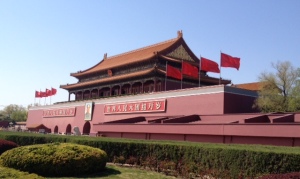 Our plane arrived at Incheon Airport, Seoul, in June 2019 after a long and uneventful flight from Seattle. This was the first stop on the second round-the-world trip for my wife, son (age 19), daughter (age 14), and me. We learned many things the first time around, and we implemented our lessons during our second time around.
Our plane arrived at Incheon Airport, Seoul, in June 2019 after a long and uneventful flight from Seattle. This was the first stop on the second round-the-world trip for my wife, son (age 19), daughter (age 14), and me. We learned many things the first time around, and we implemented our lessons during our second time around.
Here are ten lessons:
- Arrive during daylight hours, if possible. Check! We arrived at 4:30 PM on a Wednesday afternoon. It feels easier to find your way around an unfamiliar place with light in the sky. Daylight helps you get your bearings and visually scan a place. You can make it in the dark, of course, but arriving with daylight feels better to us.
- Have WiFi or mobile phone service so you can connect to maps and webpages. Check! I made sure my mobile phone was unlocked before leaving home. At Incheon Airport, you can choose from multiple WiFi vendors. After talking with the sales staff, I decided on a unit that would last for the duration of our stay. Staff members helped me set up the mobile WiFi and check it before I left.
- Choose accommodations close to public transportation. Check! We rented an Airbnb apartment accessible by AREX Train from Incheon Airport. AREX is a commuter rail line connecting Incheon to Seoul, and it has two types of trains.
 The AREX Express Train runs from Incheon Station nonstop to Seoul Station in about forty-five minutes. The AREX All-Stop Train stops at eleven stations between Incheon and Seoul Station and takes about an hour. We took the All-Stop Train to Hongik University Station, and the trip was quiet and easy.
The AREX Express Train runs from Incheon Station nonstop to Seoul Station in about forty-five minutes. The AREX All-Stop Train stops at eleven stations between Incheon and Seoul Station and takes about an hour. We took the All-Stop Train to Hongik University Station, and the trip was quiet and easy. - Each person is responsible for carrying her or his own luggage. Check! We limit our luggage to one carry-on bag and one backpack. We have chosen the Rick Steves Rolling Backpack because it has wheels to pull behind and, if necessary, straps to carry it on one’s back. It’s lightweight and durable — both important qualities after flying for several hours and trying to find one’s accommodations in a new place!
- Find your accommodations as quickly as possible, get water and food, and begin to learn the area. Check! Our Airbnb host provided excellent directions, which we followed to find the apartment about a ten-minute walk from the station. Of course, we made the inevitable wrong turns along the way. But honestly, that’s part of the fun of travelling! After depositing our bags, we used mobile WiFi to find the nearest market.
- Drink as much water as possible. Check! We each carry a water bottle while travelling and intentionally drink water throughout the day. During a long flight or a day of exploring, it’s easy to get dehydrated. So, locate good drinking water, and drink up! Our apartment had filtered water, which is a big plus and money saver!
- Eat in as much as possible to save money. Check! In most places, you can purchase groceries in local markets or stores and eat at home with substantial savings. We found a small grocery store about a fifteen-minute walk away from our apartment. Going to a local store is part of the fun of travelling for us. Trying to figure out labels in different languages is a challenge. Looking for familiar items is nice (We’ve found taco mix and spaghetti sauce in nearly every place we’ve ever visited on six continents!), but trying something new and specific to the place you’re visiting is a great way to learn about life there.
- Add some comfort food or special treat. Check! I look for local desserts in stores. At relatively low cost, you can purchase cookies or snacks unavailable at home. Trying new foods is part of the adventure. Are they always winners? Of course not! But, usually they are very good. If the locals didn’t like them, vendors wouldn’t sell them, right?
- To help avoid jet lag, stay awake until bedtime in your new place — and get outside as much as possible. Check! After dinner, we went for a walk around the Hongdae neighborhood of Seoul.
 Hongdae is home to Honggik University, a leading fine arts college in South Korea. The neighborhood has many shops, street vendors, and young people. It was fun to look around, stroll amidst the vibrant people, and fight the urge to sleep.
Hongdae is home to Honggik University, a leading fine arts college in South Korea. The neighborhood has many shops, street vendors, and young people. It was fun to look around, stroll amidst the vibrant people, and fight the urge to sleep. - Wear ear plugs while sleeping in a new place. Check! Even though we are pretty tired on our first night in a new place, the new noises can keep us from sleeping or wake us earlier than we want the next morning. We take ear plugs to provide much-needed sleep on arrival.
After arriving, finding food and water, and getting a good night’s sleep, we were ready for our adventures in Seoul. More on that in the next blog post!














































